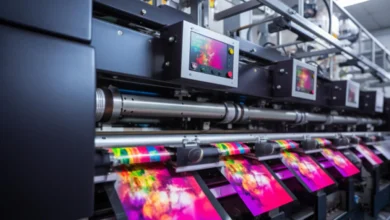How Smart Technology is Changing Property Investment Decisions in Singapore

Technology has completely changed how we think about homes. Five years ago, smart homes were something you’d see in science fiction movies. Today, they’re becoming standard features in modern developments across India’s major cities.
For those exploring how technology integrates with contemporary living spaces, especially in well-planned urban areas, developments like Singapore’s Pinery Residences demonstrate how smart features can enhance daily life without adding unnecessary complexity – a model that Indian cities are increasingly adopting.
My cousin recently moved into a new apartment in Bangalore. The difference from her old place isn’t just aesthetics – it’s functionality. Climate control through her phone, security systems she can check remotely, energy monitoring that actually helps reduce bills. These aren’t luxury features anymore. They’re becoming expectations.
The Smart Home Revolution Nobody Expected
Remember when “smart home” just meant you could clap to turn off lights? We’ve come ridiculously far from that. Today’s smart home technology actually solves real problems rather than just impressing guests for five minutes.
Energy management systems are the unsung heroes here. My neighbor installed one last year. His electricity bill dropped by nearly 25% within three months. Not through dramatic lifestyle changes – the system just optimized when appliances ran, adjusted cooling based on occupancy, and eliminated phantom power drain. Simple stuff that adds up to real savings.
Climate control you can manage remotely sounds gimmicky until you experience it. Coming home to a comfortable temperature instead of walking into an oven during summer makes a tangible difference to daily comfort. Especially in Indian climates where temperatures can be brutal.
Security features have evolved beyond basic alarms. Video doorbells, smart locks, integrated camera systems that actually work reliably – these provide genuine peace of mind. Not because everyone’s paranoid, but because having that security layer is simply comforting.
Why This Matters for Indian Cities
India’s urban population is exploding. Bangalore, Hyderabad, Pune, Mumbai – these cities are adding millions of residents who need housing. The old approach of just building more apartments isn’t sufficient anymore. We need smarter housing that uses space efficiently and operates sustainably.
Smart building technology helps address these challenges. Buildings that manage energy efficiently reduce strain on power grids. Water management systems minimize waste in cities where water scarcity is real. Waste management solutions help keep rapidly growing neighborhoods cleaner.
Bangalore offers a particularly interesting case. The city’s established itself as India’s tech capital, so residents expect their living spaces to reflect that technological sophistication. Developers responding to this demand are incorporating features that would have seemed futuristic just a few years ago.
See also: Efficient Beverage Production Techniques
Learning From International Examples
While Indian cities are developing their own approaches, looking at how other dense urban areas handle similar challenges provides valuable insights. Singapore, for instance, has been integrating smart technology into residential developments for years now.
What makes Singapore’s approach interesting is the emphasis on practical implementation over flashy features. Technology that genuinely improves daily life rather than just sounding impressive in marketing materials. Pinery Residences along Upper Bukit Timah Road demonstrates this philosophy – smart home features focused on energy efficiency, security, and genuine convenience rather than gimmicks.
The development showcases how established locations can be enhanced with contemporary technology without losing the advantages that made the area desirable in the first place. It’s not about creating entirely new neighborhoods from scratch – it’s about upgrading existing good locations with modern living standards.
This model translates well to Indian cities. Take established areas in Bangalore like Indiranagar or Koramangala. The locations already work – good connectivity, established amenities, proven desirability. Adding modern buildings with smart features to these areas makes more sense than betting on emerging locations that may or may not develop as promised.
The Sustainability Question Cities Can’t Ignore
India’s cities face serious environmental challenges. Air quality, water scarcity, energy constraints – these aren’t abstract future problems. They’re current realities affecting quality of life right now.
Smart building technology offers practical solutions. Energy-efficient systems reduce power consumption and associated pollution. Water management systems that detect leaks immediately prevent massive waste. Smart waste segregation and collection makes recycling actually work at scale.
Solar panels are becoming increasingly common on residential buildings. The economics finally make sense – installation costs have dropped while electricity prices keep rising. Buildings generating their own power reduce grid dependency while cutting resident costs. Win-win.
Green building certifications used to be just marketing. Now they represent real standards that translate to measurably better buildings. Lower operating costs, healthier indoor environments, reduced environmental impact. These certifications have teeth.
What Residents Actually Want
I’ve talked to dozens of people who recently bought apartments in various Indian cities. The features they actually care about versus what marketing emphasizes often don’t match.
Everyone wants reliable basics. Power backup that actually works during outages. Water supply that doesn’t fail randomly. Internet connectivity that can handle multiple devices streaming simultaneously. These aren’t glamorous, but they’re non-negotiable.
Space efficiency matters enormously. Storage solutions that maximize every corner. Layouts that don’t waste space on awkward corners nobody can use. Kitchens designed for actual cooking, not just looking pretty in photos. These practical details affect daily life more than fancy lobbies.
Amenities people will genuinely use beat impressive-sounding features nobody touches. A well-maintained gym that’s convenient to access gets used. A fancy pool that requires advance booking sits empty. Understanding this difference separates good developments from mediocre ones.
The Affordability Balance
Smart features are great, but they cost money. The question becomes: what’s worth paying for, and what’s just inflating prices without adding real value?
Energy-efficient systems pay for themselves over time through reduced bills. Security features provide intangible value through peace of mind. These are justifiable expenses that deliver ongoing benefits.
But voice-activated toilets? Refrigerators with touchscreens? These add cost without proportional value for most people. Developers sometimes load up on flashy tech to justify higher prices when residents would prefer those savings passed along to them.
The sweet spot is developments that incorporate genuinely useful technology while remaining realistically priced for their target market. Not stripping everything down to bare bones, but being thoughtful about what features actually enhance living versus what just sounds cool.
Remote Work Changed Everything
The pandemic permanently shifted how people think about their homes. When your apartment becomes your office, your gym, your entertainment venue, and your social space all at once, different features matter.
Reliable high-speed internet went from nice-to-have to absolutely essential. Home office space became a priority rather than an afterthought. Outdoor access gained importance when people couldn’t leave home for months. Developments that adapted to these changing priorities did well. Those that didn’t struggled.
This shift is permanent. Even as offices reopen, hybrid work is here to stay. Apartments need to function as full-time living spaces in ways they previously didn’t. Developers still designing for pre-pandemic lifestyles are missing the point.
Looking at What Actually Works
Walking through recently completed developments across Bangalore, some patterns emerge. The successful ones share certain characteristics beyond just good locations or competitive pricing.
Thoughtful layout design that actually works for furniture and daily living. Technology integration that simplifies rather than complicates. Amenities scaled appropriately for the community size. Professional management that maintains the building properly. These fundamentals matter more than marketing hype suggests.
Less successful developments often have opposite problems. Impressive showflats that don’t represent actual units. Technology that malfunctions constantly. Amenities that look great but don’t get maintained. Management that’s unresponsive to resident needs. These issues compound over time.
What This Means for Future Developments
Technology will keep advancing, and resident expectations will keep evolving. Developments being planned now need to anticipate these trends without overcommitting to technologies that might not pan out.
Future-proofing means flexible infrastructure that can adapt as technology changes. It means choosing systems with strong support and regular updates rather than proprietary solutions that might be orphaned. It means designing spaces that can accommodate changing needs rather than being locked into specific configurations.
The winning formula seems to be solid fundamentals – good location, quality construction, thoughtful design – enhanced with carefully selected technology that genuinely improves daily life. Not betting everything on technology to compensate for weak fundamentals, but using it to make already good buildings even better.
The Bottom Line for Homebuyers
If you’re looking at apartments in any major Indian city, pay attention to which technology features actually matter versus which are just marketing noise. Energy efficiency that reduces your bills? Important. A smart mirror that displays your calendar? Probably not worth the premium.
Visit developments multiple times. Talk to current residents about what actually works versus what sounds good but doesn’t deliver. Test the amenities yourself rather than trusting the showflat experience. This homework pays off by helping you avoid expensive mistakes.
The best homes for the next decade will be ones that balance timeless fundamentals with thoughtfully implemented technology. Not chasing every trend, but adopting innovations that genuinely enhance living. That balance is what separates great developments from mediocre ones dressed up with flashy marketing.




